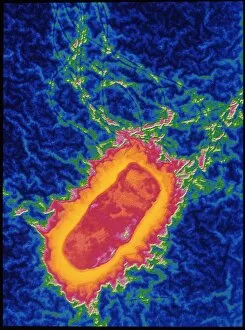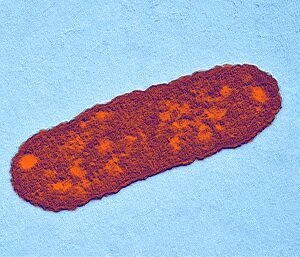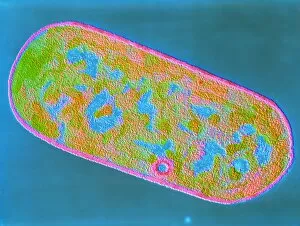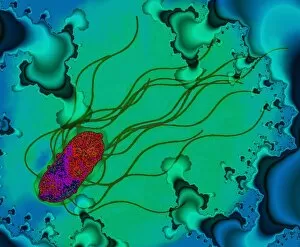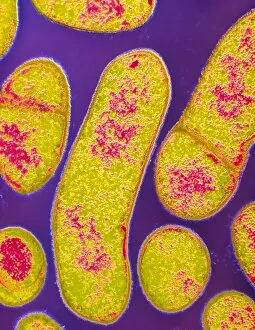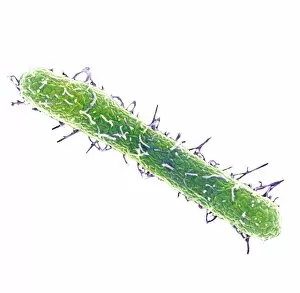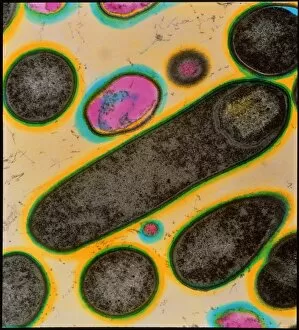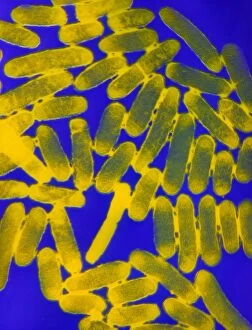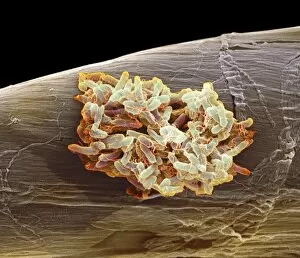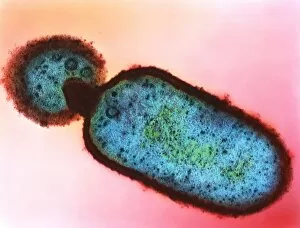Food Poisoning Collection (#3)
"Unseen Culprits: Exploring the Microscopic World of Food Poisoning" E
For sale as Licensed Images
Choose your image, Select your licence and Download the media
"Unseen Culprits: Exploring the Microscopic World of Food Poisoning" E. Coli bacteria, as seen under a scanning electron microscope (SEM), are one of the leading causes worldwide. Salmonella bacteria, also observed through SEM, pose a significant threat to food safety and can cause severe illness if ingested. The transmission of Norovirus particles, captured using a transmission electron microscope (TEM), is another common source of foodborne illnesses. E. Coli bacteria are notorious for contaminating various foods such as raw meats and unpasteurized dairy products, making proper cooking and hygiene practices crucial in preventing infections. Another SEM image reveals the presence of Salmonella bacteria on contaminated surfaces or in improperly handled food items. A culture displaying Salmonella bacterium highlights the need for strict sanitation measures during food processing to prevent bacterial growth and subsequent contamination. The strain E. coli 0157:H7 is particularly dangerous due to its ability to produce toxins that can lead to severe complications like kidney failure when consumed through contaminated foods or water sources. Witnessed under SEM once again, a dividing Salmonella bacterium showcases their rapid multiplication potential within our digestive system if we consume contaminated foods or beverages. SEM images further reveal the intricate structure of Salmonella typhimurium bacteria responsible for causing gastroenteritis symptoms such as diarrhea, abdominal pain, and fever upon ingestion. Salmonella typhimurium bacterium magnified by an SEM reminds us that even microscopic organisms have substantial impacts on public health; thus ensuring proper food handling practices remains essential in safeguarding against these harmful pathogens.


